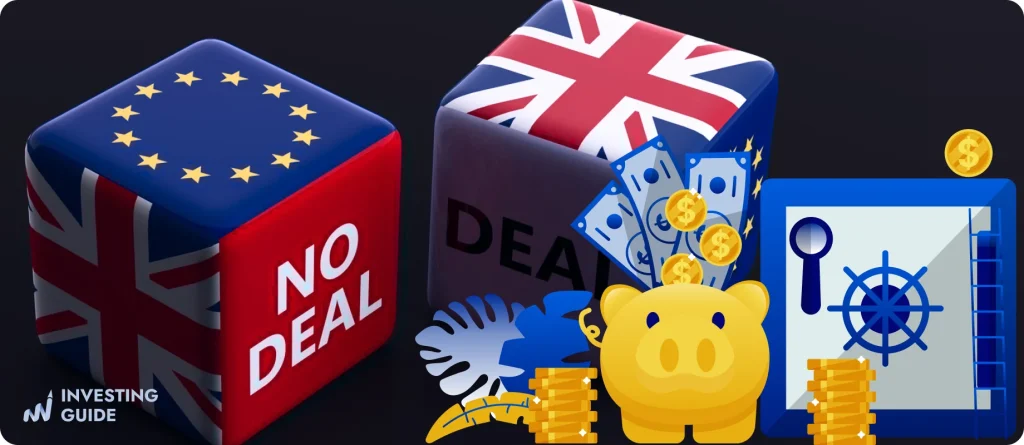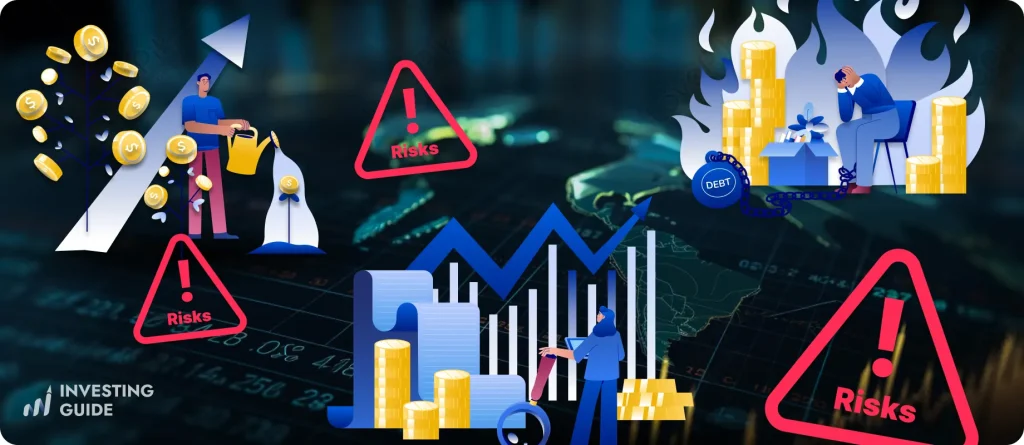Claire is an experienced financial analyst with strong analytical skills. With her expertise and focus on thorough market research, Claire ensures individuals in the financial landscape are well-informed. Often in an engaging writing style, her content helps traders quickly grasp the market dynamics. As an Associate Editor of financial news at InvestingGuide, she provides an original analysis of the financial markets and economy. You’ll be at joy reading her flawlessly written content. She has written hundreds of pieces that simplify complex financial topics in plain language.
We may receive compensation from our partners for placement of their products or services, which helps to maintain our site. We may also receive compensation if you click on certain links posted on our site. While compensation arrangements may affect the order, position or placement of product information, it doesn’t influence our assessment of those products.
The United Kingdom’s exit from the European Union has reshaped its economic landscape. While the road to Brexit was fraught with uncertainty, it also opened doors to new trade agreements and investment possibilities. Today, we explore the key trade deals secured post-Brexit. We will also look into the investment opportunities they present, the associated challenges, and the broader implications for businesses and investors.
Key Post-Brexit Trade Deals

Since the exit from the EU, the UK has pursued trade agreements with nations all over the world. The most significant deal reached includes the Comprehensive Economic Partnership Agreement (CEPA) with Japan. This agreement, signed in October 2020, reduces tariffs on goods and services, thus further opening up markets to UK businesses. It builds upon the EU-Japan Economic Partnership but introduces provisions tailored to UK industries, such as financial services and digital trade.
Another key agreement is that signed with Australia in December 2021. The deal removes tariffs on 99% of all exports to Australia, besides growing cooperation in agriculture, professional services, and digital innovation. It also streamlines the process for SMEs in entering the Australian market.
Besides that, a trade deal has also been nailed with New Zealand, which is likely to grow the exports of machinery, pharmaceuticals, and food items. Specifically, this will be in favor of UK exporters, given that the deal provides tariff-free trade for a number of items and smooths customs procedures.
Probably the most ambitious was the UK’s accession to the Comprehensive and Progressive Agreement for Trans-Pacific Partnership, or CPTPP. The first European country to join this 11-nation bloc opens up markets in the Asia-Pacific—a fast-growing region that will help the government realize its ambition of pivoting toward diversified global trade.
Last but not least, the ongoing negotiations with India show the intention of the UK to get closer to one of the fastest-growing economies in the world. Although no full deal has been inked as yet, the progress toward reducing tariffs and overcoming service trade barriers is promising for future collaboration.
Investment Opportunities Arising from Trade Deals

The post-Brexit trade agreements have brought a raft of opportunities for UK businesses to invest in. For example, the CEPA with Japan develops and progresses the opportunities available in the technology and digital sectors. With Japan also oiled into innovation, UK tech firms can tap into this market to collaborate on projects ranging from artificial intelligence and robotics to green technologies.
The deal with Australia holds huge investment potential both in agriculture and renewable energy. Australian agribusinesses that are in need of advanced farming techniques may want to reach out to UK firms for expertise and collaborations. Meanwhile, Australia’s drive on renewable energy also squares well with the UK strength in green technology, laying the ground for joint projects in wind and solar power.
The New Zealand trade agreement also powers the opportunities in agriculture, mainly for high-value commodities like dairy and meat products. In addition, New Zealand’s focus on sustainability offers UK investors an opportunity to collaborate on projects that promote environmental conservation and innovation.
The accession to CPTPP will expand access to the various diversified markets across the Asia-Pacific. Investors are likely to be offered a chance in health, consumer goods, and advanced manufacturing as well. The region’s burgeoning middle class entails demand for high-quality products, hence the best target for exporters from the UK.
India’s agreement, though still under negotiation, has huge investment potential. UK firms are likely to benefit from economic growth and government initiatives for attracting foreign investment in infrastructure and IT services, among other areas. Similarly, the demand for education and healthcare services is rising, thus positioning UK businesses to increase their presence in these fields.
Challenges and Risks

While the post-Brexit trade environment is an exciting prospect, it is, at the same time, not without its challenges. One critical issue remains that of regulatory divergence. The different trade deals have varying rules, which can complicate compliance for businesses accustomed to uniform EU regulations. Explaining such different requirements demands significant time and resources, especially for SMEs.
Tariff reductions, though beneficial, do not eliminate all barriers. Non-tariff barriers, such as differing product standards and certification processes, can still hinder market entry. For instance, UK exporters to Japan may face stringent quality controls that require additional investments to meet local standards.
Geopolitical factors also pose risks. The global trade environment is increasingly volatile due to tensions between major economies. For example, the UK’s membership in the CPTPP could expose businesses to risks stemming from disputes among member nations or between China and Western countries.
Currency fluctuations add another layer of complexity. The pound’s value can impact the profitability of exports and imports, especially in regions where exchange rate volatility is high. Businesses must adopt strategies to mitigate such risks, including hedging or diversifying their markets.
Finally, domestic challenges cannot be ignored. The UK faces labor shortages in key industries, which may limit its ability to capitalize fully on new trade opportunities. Investments in workforce development and training will be crucial to overcoming this hurdle.
Conclusion
Post-Brexit trade deals have marked a new chapter for the UK’s economic policy, emphasizing global partnerships and diversification. These agreements offer promising investment opportunities in sectors ranging from technology to renewable energy. However, businesses and investors must navigate a landscape filled with regulatory, geopolitical, and economic challenges.
By understanding the nuances of these trade deals and adopting strategies to address associated risks, UK businesses can position themselves for success. While the path forward is complex, the opportunities available are equally transformative, signaling a bright future for those ready to embrace change.

